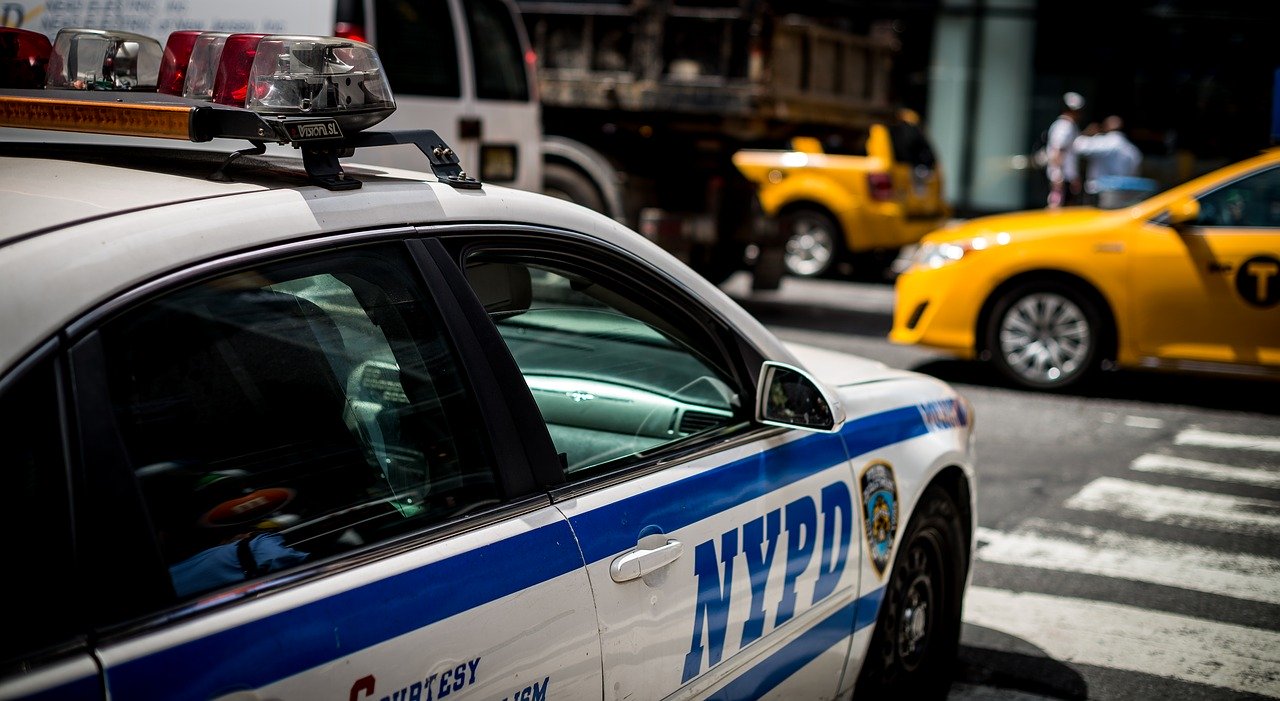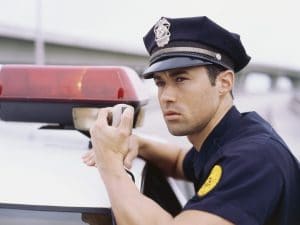New York City Police Brutality: Its Origins & Key Elements

American society needs properly trained and responsible police officers to protect the public against crime and other dangerous elements. However, officers are never entitled to abuse their power by using any level of excessive or unreasonable force to manage or control a situation.
When excessive force isn’t justified by the surrounding circumstances, a victim can often file a successful claim for police brutality. Acting as government agents, police officers can and should be held responsible for their unlawful actions.
Brief review of historical events that likely gave rise to police brutality
Whether you consult more conservative sources of information – or more activist-oriented materials — you’ll quickly learn that many experts believe that police brutality is rooted in the long ago, unjustified lynching of African-Americans in this country. After the Civil War ended, too many white people were taught that Black Americans (of all ethnic backgrounds) posed a threat to the safety and security of white communities.
This unacknowledged racism was then adopted by some police officers as a justification for exercising excessive violence toward Blacks (and other perceived minorities) whenever they needed to gain control of a threatening situation. Yet unlawful violence (as opposed to reasonable force) is never justified. Trying to maintain a status quo traceable back to slavery just doesn’t belong in a democracy.
Stereotyping members of the public based on race, gender, religion, disability, ethnic origins or sexual orientation never provides proper justification for any police office to use excessive force against any individuals.
Legal background for the various claims of police misconduct
The three descriptive terms — police misconduct, excessive force and police brutality — are often used interchangeably to describe what occurs when a police officer exceeds his or her right to gain control of a situation by mistreating suspects or members of the general public. One of the most common types of lawsuits that injured victims pursue is based on the violation of their civil rights under the Civil Rights Act of 1871, Section 1983.
When a seriously injured citizen alleges that a police officer used excessive force to accomplish a (supposedly) lawful task, that victim often files a civil claim based on the tort of assault and battery. An added claim of negligence is sometimes added in such cases. In the pleadings, the victim’s lawyer will normally assert that the victim’s constitutional rights were violated by the police officer under color of federal, state or local law.
The Fourth Amendment will also often be cited in many of these cases since that statute forbids “unreasonable seizures” – a term that can include the use of excessive force.
Specific police activities often referenced in civil rights cases alleging misconduct
- Racial profiling. The American Civil Liberties Union (ACLU) notes that African-Americans, Hispanics (and others) are often justified in raising this claim of police misconduct since they are disproportionately pulled over by the police for traffic stops – unrelated to any known violations or crimes. The informal terms “driving while black” (or “brown”) stem from this reality. Victims also have the right to raise claims of unlawful discrimination based on race, as set forth in Title VI of the Civil Rights Act of 1964 and other pertinent laws;
- Verbal attacks. It is never lawful, especially when a suspect or other person is being questioned, for a police officer to launch into angry and demeaning verbal tirades (often laced with hate language);
- Use of excessive force. While police officers always have the right to use reasonable force when required by threatening circumstances, they do not have an absolute right to escalate their behavior to the point of using excessive force. An example of this might be unnecessarily beating or battering a suspect who is calmly attempting to submit to authority during questioning or an arrest;
- Making false arrests. This can occur under many types of circumstances, including where a police officer might be tempted to “plant” a gun or drugs on a suspect – or place such items in his vehicle or backpack– to justify an arrest or charges;
- Abuse of legal power. A police officer – or his/her supervisors – might commit this type of act by unjustifiably adding charges to the original ones filed against a suspect, while fully knowing that there’s little evidence or proof to hold the person for such claims. This may be sometimes be done to increase the chances that the suspect won’t be released – or to cause the bail set to be higher and beyond the accused’s means to obtain his/her freedom.

This form of police misconduct could also involve knowingly giving false testimony in a case or trying to intimidate witnesses prior to trial (who are likely to testify on behalf of the accused, claiming his innocence). Forcing suspects to confess to crimes they didn’t commit is another form of police misconduct that can give rise to legal liability. Purposefully destroying evidence — or greatly compromising it so it will no longer be available to exonerate an accused suspect — is also an abuse of legal power;
- Assault and battery. While assault mainly indicates a verbal threat to immediately inflict physical harm against a suspect – actual battery means the police officer carried out the threat and physically battered or otherwise beat up or abused the suspect. In some cases, victims of police brutality may choose to allege that their Fourteenth Amendment rights were violated because they were deprived of “life, liberty or property” without due process of law;
- Surveillance abuse. This may be most likely to occur in conjunction with racial profiling. For example, when the police suspect that a specific house or other place is being used to help manufacture or distribute illegal guns or drugs, they may put that location under ongoing surveillance without any proof of their suspicion. The cops may just be alarmed by certain individuals who keep coming and going from the building;
- Corruption and bribes. This type of police misconduct has been depicted in many high-profile movies, based on actual crimes committed by police seeking to supplement their official income by taking kickbacks and other payouts from criminal elements in the communities they’re supposed to be protecting. Bribes can also be used to favor one group or gang over another — by simply not arresting them regularly — or turning a blind eye to their illegal activities;
- Wrongful shootings. This is perhaps the most common form of excessive force often reported in the news. All too often, one or more (and sometimes numerous) police officers will fire their weapons at a fleeing individual – who may not even be a crime suspect – just because the the police thought they saw the person handling a weapon (in many cases, a weapon is never found). While the courts often extend great latitude and trust to police officers to do their jobs as they see fit – in light of all known threats – firing a gun at a suspect in the back or head is rarely ever justified (unless the person is a known suspect who has just finished directly firing at the police);
- False imprisonment. This often involves holding a person against his/her will – even when you have no proof to link the individual to a known crime. This might include placing a handcuffed person in a patrol car for a lengthy time period — or in a jail cell at a police station (especially when no charges are ever filed);
- Taser gun injuries. Courts often just assume that police officers only used reasonable (and not excessive) force – when a suspect suffers harm due to the use of a taser gun. However, since many police encounters are somewhat unique, all available evidence will be carefully reviewed to determine if the use of a taser gun was excessive, under the circumstances. After all, taser guns do shoot out electric probes that can be quite painful and debilitating.

A small percentage of suspects may even suffer a heart attack (or other unpredictable or serious medical problems) after a taser gun has been used against them. Body cam footage is often crucial when reviewing these types of potential misconduct cases;
- Illegal search and seizure activities. The police are fully aware that under many circumstances, proper warrants must be obtained before a suspect’s car trunk or home is searched for possible evidence. The Fourth Amendment to the U.S. Constitution clearly prohibits illegal searches and seizures. In some cases, dishonest cops may even falsely claim in a traffic report that a person was driving recklessly, just to try and justify pulling that individual over because s/he fits one of their racial profiling descriptions;
- High-speed police chases that end in harm to suspects or the general public. While such chases may be allowed under special circumstances, the chances of innocent parties being seriously injured or killed are making these types of pursuits less common. Under certain conditions, conducting such chases may be viewed as police misconduct;
- Coercive sexual misconduct. Sadly, too many officers attempt to sexually use or abuse suspects they have arrested, thinking that either no one will find out – or the suspect will not be believed when the officer denies the accusations;
- Mental or emotional abuse displayed toward people being questioned or arrested. This type of police behavior is never acceptable, especially when the officers should be able to recognize that they may be interacting with people who are mentally or physically impaired due to some type of disability. Officers should never just assume people are drunk or being rude – just because they appear to be confused.
Unfortunately, the disabled are not always treated properly by some police officers. When these individuals are victims of people brutality, they have every right to bring additional charges indicating that their rights under the Americans with Disabilities Act have been violated.
While this list isn’t intended to be comprehensive, it does provide a broad overview of the types of police behavior often categorized as misconduct.
If you believe that you’ve been subjected to unlawful police misconduct (or actual police brutality), you need to immediately contact our New York City police brutality law firm.
We’ll carefully investigate the facts of your case and let you know if they’ll fully support a lawsuit based on illegal police (or federal officer) misconduct. We’ll fight hard to win the maximum compensation available to help you recover for all your pain and suffering, lost wages, medical expenses and other losses directly tied to the police misconduct that you had to endure.



